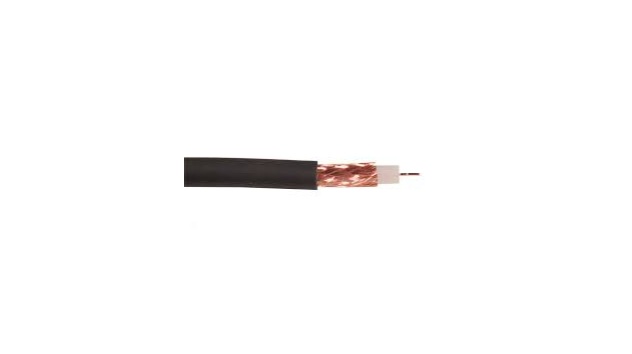When it comes to coaxial cables, RG 59 cable is one of the most commonly used types. Known for its versatile applications in both video and radio frequency (RF) transmission, RG 59 provides a reliable solution in many settings. Whether for surveillance systems, cable television, or audio/visual setups, understanding the characteristics and benefits of RG 59 cable helps ensure optimal performance in your network or installation.
What is RG 59 Cable?
RG 59 cable is a type of coaxial cable primarily used for transmitting low-frequency signals such as video signals. It consists of a central conductor, typically made of copper or aluminum, surrounded by insulation, a shielding layer, and an outer jacket. The shield in RG 59 provides protection from electromagnetic interference (EMI), which ensures signal integrity.
In comparison to other coaxial cables like RG 6 cable, RG 59 has a smaller conductor and thinner shielding. While RG 59 is suitable for short-distance applications, RG 6 cable is often preferred for long-distance or high-frequency signal transmission due to its larger conductor and more robust shielding.
Characteristics of RG 59 Cable
Signal Quality
One of the defining features of RG 59 cable is its ability to transmit signals with relatively low attenuation over short distances. The attenuation in coaxial cables refers to the loss of signal strength as it travels through the cable. RG 59 is ideal for shorter runs, such as within a building or between nearby devices, where signal loss is minimal.
The quality of signal transmission in RG 59 is good enough for standard-definition video and lower-frequency RF applications, such as security cameras or basic television broadcasts. For higher-frequency signals or applications requiring long cable runs, cables like RG 6 may be a better choice due to their enhanced performance over distance.
Flexibility and Ease of Installation
RG 59 cables are flexible and easy to install in spaces with tight corners or where routing through walls and ceilings is required. Their smaller diameter compared to cables like RG 6 cable allows for easier handling and installation. This flexibility makes RG 59 particularly useful in residential and commercial installations, where ease of routing is a significant consideration.
Despite its flexibility, RG 59 is still durable enough to withstand the demands of typical installation environments. It provides a balance between ease of use and reliability, making it a popular choice for various video and RF transmission applications.
Applications of RG 59 Cable
CCTV and Security Systems
RG 59 cable is commonly used in closed-circuit television (CCTV) and security camera installations. The cable’s ability to carry video signals with low loss over short distances makes it ideal for transmitting signals from security cameras to monitors or recording equipment. Since CCTV systems often involve wiring over relatively short distances, RG 59 provides an excellent solution for these setups.
Television and Satellite Systems
For traditional cable television or satellite systems, RG 59 cable is often used to deliver the signal from the antenna or satellite dish to the TV receiver. In some instances, RG 59 can be used for short-distance connections between televisions and other devices. However, RG 6 cable is often favored for longer cable runs or high-definition television (HDTV) transmissions due to its enhanced ability to handle higher frequencies and longer distances.
Audio and Video Systems
In professional AV setups, RG 59 is frequently used to carry video signals between devices such as VCRs, DVD players, and projectors. It is commonly found in home entertainment systems, conference rooms, and other venues that require reliable video signal transmission. RG 59 provides a dependable connection for standard video signals, making it a staple in many AV installations.
Comparing RG 59 Cable with RG 6 Cable
While RG 59 cable is ideal for many standard applications, RG 6 cable offers significant advantages in specific scenarios. Here’s a comparison of both cables:
- Conductor Size and Shielding: RG 6 has a thicker central conductor and better shielding, which makes it more effective at carrying signals over long distances and at higher frequencies. RG 59, on the other hand, is more suitable for short-distance connections and lower-frequency applications.
- Signal Quality: RG 6 cable offers lower attenuation and greater resistance to interference, making it the preferred choice for applications such as cable TV, broadband internet, and high-definition video. While RG 59 can handle basic video and RF signals, RG 6 is generally the better option for modern, high-performance systems.
- Cost and Installation: RG 59 is typically less expensive than RG 6 and is easier to install due to its smaller size and flexibility. For short-distance and budget-friendly installations, RG 59 can be the ideal choice. However, for longer distances or installations that require high-quality signal transmission, RG 6 is the more reliable option.
How to Choose Between RG 59 and RG 6
When deciding whether to use RG 59 cable or RG 6 cable, it’s important to consider the specific needs of your application:
- Short-Distance Applications: For installations where cable runs are short (under 100 feet), RG 59 may be sufficient. It is a good choice for CCTV systems, basic television connections, and audio/video applications where signal loss over distance is not a major concern.
- Long-Distance or High-Frequency Applications: If your system involves long cable runs or high-frequency signals, RG 6 is generally the better option. Its improved shielding and thicker conductor make it suitable for HDTV, satellite systems, and high-speed data transmission.
- Cost Considerations: RG 59 is typically more affordable than RG 6, making it a good choice for budget-conscious installations. However, if maintaining signal integrity over longer distances is a priority, investing in RG 6 might be worthwhile.
Conclusion
RG 59 cable offers a reliable and cost-effective solution for short-distance video and RF signal transmission. It excels in applications like CCTV, basic television connections, and audio/video systems, where signal loss is minimal, and flexibility is needed. While RG 59 has limitations compared to RG 6 cable in terms of signal strength over long distances, it remains a popular choice for many standard installations due to its ease of use and affordability. By understanding the characteristics and applications of each cable, you can choose the best option for your specific needs and ensure optimal performance in your RF and video systems.





